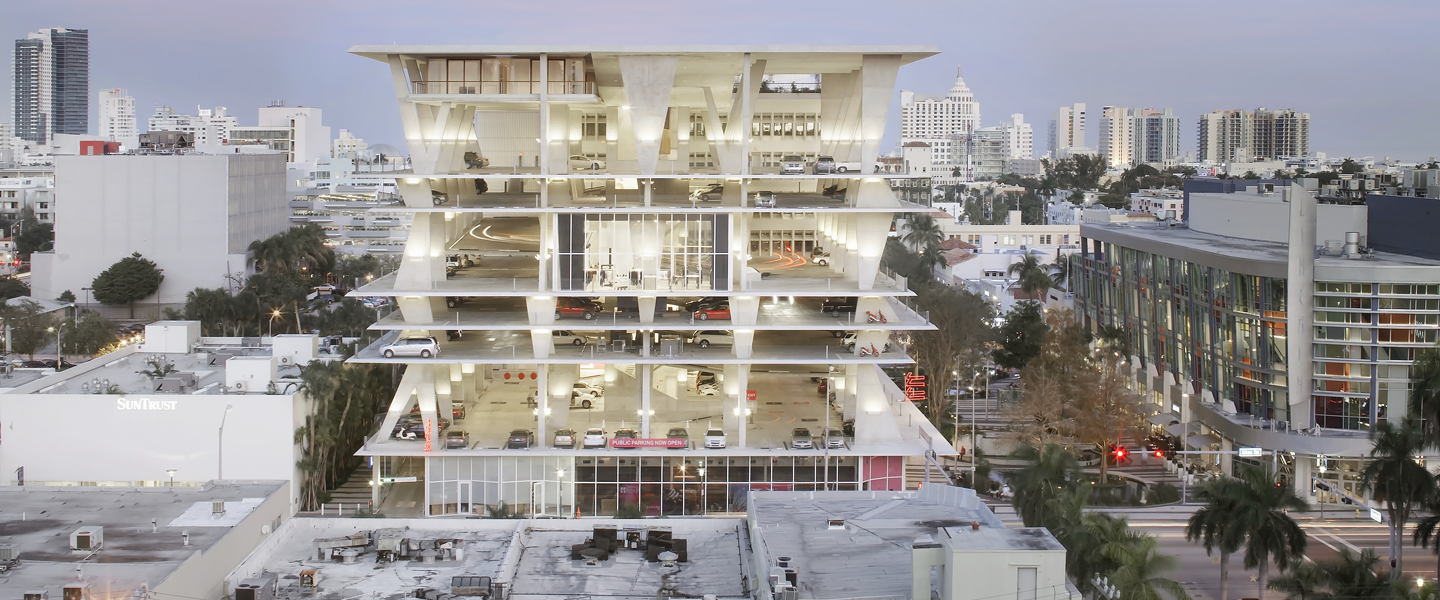1111 Lincoln Road, Herzog & de Meuron, 2010. © Iwan Baan
MIXED-USES
Whether they be social, functional or architectural, mixed-uses are in fashion in the building world today, for architects and public project contractors alike. Mixed operations are flourishing around the world, and in France in particular. Issue No. 416 of L’Architecture d’Aujourd’hui examines mixed-use in all its forms, as well as its limits in the city of today and tomorrow.
Already in the 1980s, British politicians discovered the limits of unchecked mixed urban development with the regeneration of the London Docklands. In the “Patrimoine” section, Edwin Heathcote studies the fascinating failure of this urban laboratory, which combines a financial district, a shopping district and residential towers, and where functional mixing failed to reduce social segregation. In “Enquête”, Catherine Sabbah looks at the Haussmannian model which has proved its worth by housing different social classes without resorting to an architectural “patchwork” in order to assert its claims. But with operations like the Entrepôt Macdonald, isn’t there a risk of reproducing the megastructures of the 1960s? “Projets” delves into large-scale operations like MVRDV’s Silodam or the Clichy-Batignolles district, in addition to projects at the building scale like the Interrobang in Seoul, designed by Bang by Min office, or the SH2 in Copenhagen, by Dorte Mandrup Arkitekter A/S. This section is interspersed with “Opinions” of active players of the building world such as economist and geographer Frédéric Gilli, architect Yoshiharu Tsukamoto, of Japanese Bow-Wow office, or American architect Jeanne Gang, who is the mind behind many mixed-material towers in Chicago and New-York.
“News” presents a selection of recent buildings, books and exhibitions, including the new brick and metal social housing of Avenier Cornejo Architectes in Clichy, and Renzo Piano’s future rammed-earth Surgery Center in Uganda. In “Point de vue”, Matthieu Poitevin defends an architecture left unfinished in order to give the users the freedom to appropriate it. French architects from Laisné Roussel office, who claim a pragmatic approach to develop innovations, are featured in “Portrait”.
The “Viewpoints” section, which opens up perspectives onto other disciplines, begins with an icon: Le Corbusier’s Notre-Dame du Haut chapel in Ronchamp, overlooking the monastery of Poor Clare Nuns designed by Renzo Piano, photographed and commented on by Luc Boegly for AA. In “Acteurs”, Michel Forgue, the founder of an engineering consulting firm specialized in economy, reflects on the challenges of operating on a fixed budget with regard to a program and an architectural ambition. “Design” focuses on the new headquarters of BETC in Pantin. Lastly, “Art” showcases the mysterious installations of Belgian artist Hans Op de Beeck.
This December’s “Trends” spotlights interior materials for offices, individual houses and public facilities.


